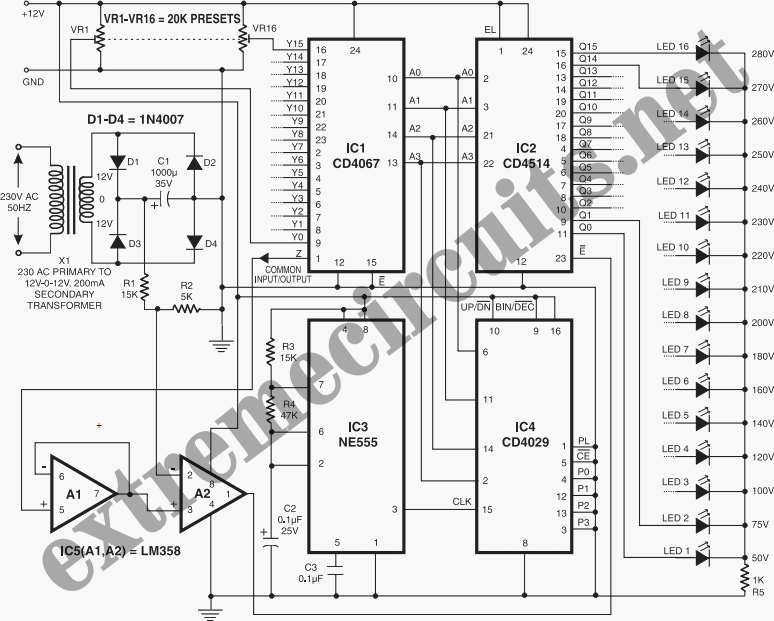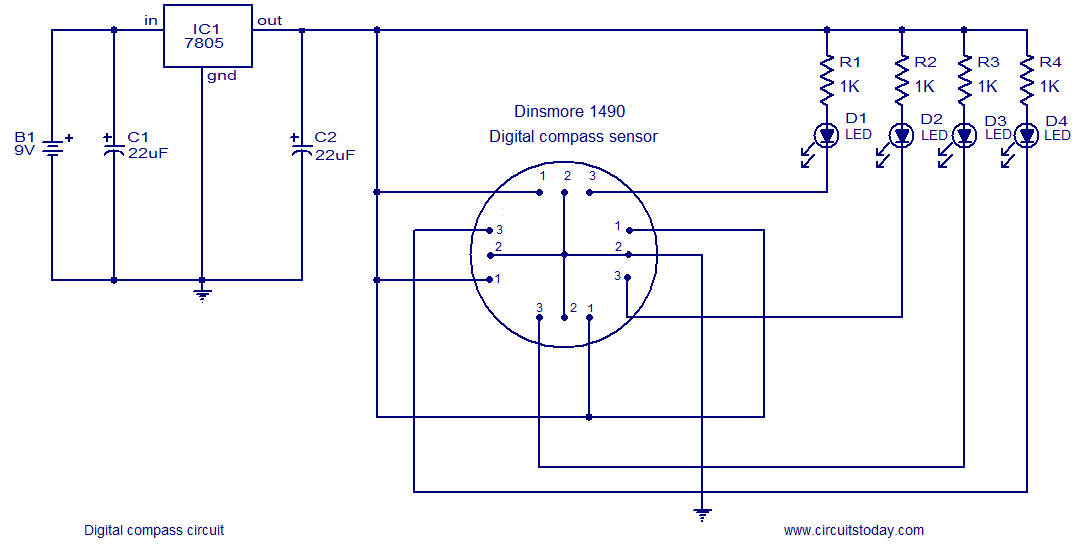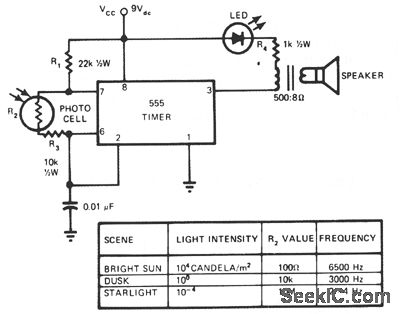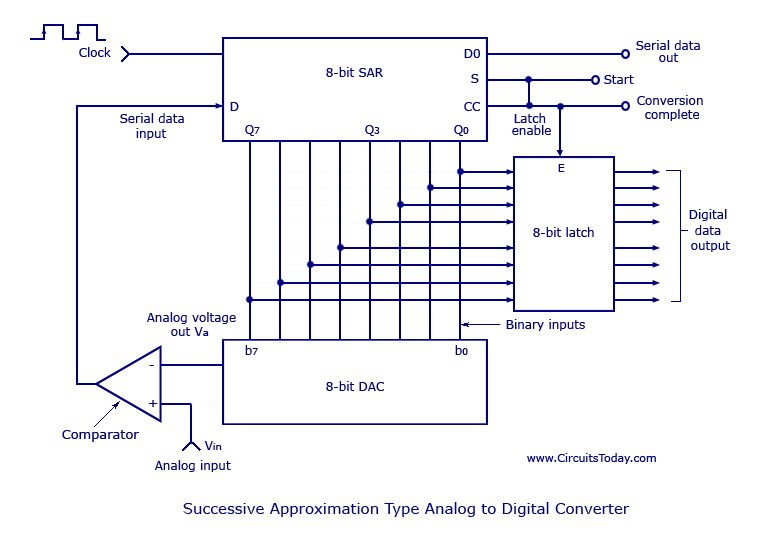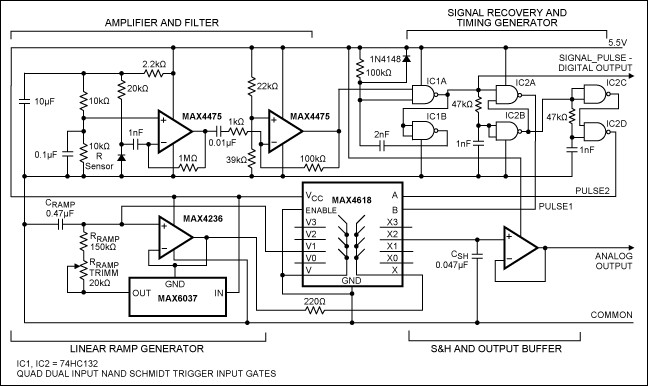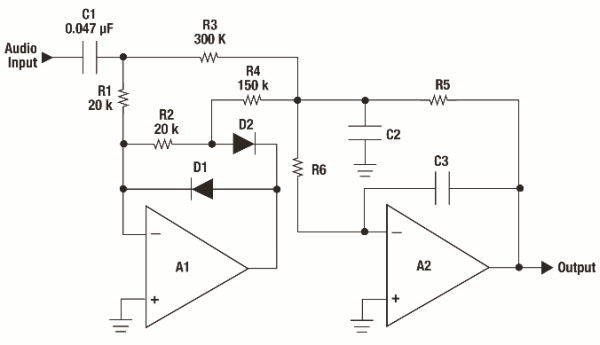
A S/PDIF Free Space Digital Audio Optical Link

This article aims to illustrate a basic optical LED wireless link for transmitting high-definition (HD) S/PDIF digital audio streams. Circuit designs for both the transmitter (optical modulator) and receiver are provided, utilizing cost-effective op-amp configurations. Specific components are listed, but the designs are generic enough to accommodate substitutions with similar specifications. Using readily available simple lenses, wireless transmission distances exceeding 100 feet are achievable. S/PDIF (Sony/Philips Digital Interconnect Format) is a consumer format for transmitting digital audio, either as uncompressed stereo or compressed multi-channel formats. Many consumer audio DVD and Blu-ray players are equipped with either 75-ohm digital coaxial or digital fiber-optic (TOSLINK) S/PDIF output jacks. These are wired connections to amplifiers or receivers that have digital audio inputs supporting high-definition audio up to at least 24-bit/96 kHz. DLNA (Digital Living Network Alliance) is a modern and evolving technology for streaming music, pictures, and videos over home networks. Network connections are typically through wired Ethernet or RF wireless connections via routers and modems. However, DLNA-certified audio players and receivers often do not support high-definition audio (e.g., 24-bit/96 kHz), and older players may lack DLNA support. Most modern digital players and receivers adhere to the evolving wired HDMI interconnection format, which supports combined high-definition video along with up to eight channels of uncompressed audio at a sampling rate of 192 kHz and a 24-bit resolution (corresponding to a maximum audio rate of 38.86 Mbit/sec). Due to the very high bandwidth, wireless connectivity is currently unfeasible. The significantly lower complexity and bandwidth of the S/PDIF format facilitate the straightforward assembly of DIY circuits, such as those described herein. This article details a free-space analog infrared and visible LED optical transmitter and silicon pin photodiode receiver link designed for ranges of 10 to 100 feet, depending on configuration and lensing, and for the CD and DVD sampling rates of 44.1 kHz and 48 kHz, respectively, or the higher-definition rate of 96 kHz. The circuits presented are entirely analog, with no digital processing, pulse shaping, or level adjustment of the received digital S/PDIF optical stream at the receiver. Nevertheless, the link enables noise-free line-of-sight optical transmission of high-definition S/PDIF digital audio streams between digital audio players, such as CD, DVD, and Blu-ray players, and digital amplifiers, provided that the output level remains within a reasonable range of the standard coaxial S/PDIF voltage level. Since the circuits are analog, they can also be adapted, with a few simple modifications, for wireless transmission of analog audio (e.g., line-out levels of any audio equipment). However, analog LED links have the disadvantage of nonlinear distortion due to the nonlinearities in the LED light-output versus forward current characteristic and also exhibit limited signal-to-noise performance, as discussed below. The S/PDIF digital audio interconnect format is characterized by a sampling rate of 64-bit audio data frames. Each 64-bit frame contains a single audio sample for both left and right channels, along with various status bits. Therefore, for the sampling rates of 48 kHz and 96 kHz discussed here, the information bit rates are 3.072 and 6.144 Mbit/sec, respectively. However, since the encoding used in the S/PDIF format is biphase mark code, a single bit would have two transitions within the bit interval. This indicates that the clock rate is twice the information bit rate. The coaxial S/PDIF standard specifies an electrical level of 0.5 Vpp at a termination impedance of 75 ohms. The required receiver bandwidth for proper detection of bit streams at 48 kHz and 96 kHz must be considered for basic binary data recovery.
The schematic for the optical LED wireless link includes two primary sections: the transmitter and the receiver. The transmitter circuit consists of a light-emitting diode (LED) that modulates the S/PDIF digital audio signal. The LED serves as the optical source, transmitting data through free space. An operational amplifier (op-amp) is utilized to drive the LED, ensuring that the output signal is appropriately amplified to achieve the necessary intensity for effective transmission over the specified distance. The choice of LED wavelength is crucial; typically, infrared LEDs are used for their efficiency and compatibility with photodiode receivers.
The receiver circuit incorporates a silicon photodiode, which converts the received optical signal back into an electrical signal. The photodiode is connected to a transimpedance amplifier, which converts the small current generated by the photodiode into a voltage signal suitable for further processing. The op-amp configuration in the receiver is designed to provide sufficient gain while maintaining a low noise level, ensuring the integrity of the received digital audio stream.
To accommodate various transmission distances and conditions, simple lenses can be employed to focus the LED output and enhance the photodiode's reception. The design allows for adjustments in component values to optimize performance based on specific applications and environmental factors.
Overall, this optical LED wireless link provides a viable solution for transmitting high-definition S/PDIF digital audio streams, leveraging the simplicity and cost-effectiveness of analog circuits while avoiding the complexities associated with digital processing.The intent of this article is to demonstrate a basic optical LED wireless link for transmission of high definition (HD) S/PDIF digital audio streams. Circuit designs for both the transmitter (optical modulator) and receiver are presented using inexpensive op-amp designs.
Specific components are included but designs are generic enough that substitu tion of components with similar specifications should work. Using readily available simple lenses, wireless transmission distances of over 100` are achievable. S/PDIF (Sony / Philips Digital Interconnect Format) describes a consumer format for transmission of digital audio, either uncompressed stereo or compressed multi-channel formats. Many consumer audio DVD and Blu-ray players are equipped with either 75 ohm digital coaxial, or digital fibre-optic (TOSLINK) S/PDIF output jacks.
These are wired connections to amplifiers or receivers equipped with digital audio inputs with high-definition audio support up to at least 24bit/96kHz. DLNA (Digital Living Network Aliance) is a modern and evolving technology for streaming music, pictures and videos over home networks.
Network connections are typically wired ethernet or RF wireless connections via routers and modems. However DLNA-certified audio players and receivers often don`t support high-definition audio (e. g. 24bit /96kHz). Also, older players don`t support DLNA. Most modern digital players and receivers support the evolving wired HDMI interconnection format which supports combined high-definition video along with an amazing 8 channels of uncompressed audio at a sampling rate of 192 kHz and 24 bit resolution (corresponding to a maximum audio rate of 38. 86 Mbit/sec). However due to the very high bandwidth, wireless connectivity is not currently possible. The significantly lower complexity and bandwidth of the S/PDIF format allows for fairly easy assembly of DIY circuits such as those described here.
This article describes a free space analog infrared and visible LED optical transmitter and Si pin photodiode receiver link designed for ranges of 10` - 100`, depending on the configuration and lensing, and for the CD and DVD sampling rates of 44. 1 and 48 kHz respectively, or the higher-definition rate of 96 kHz. The circuits here are completely analog, with no digital processing, pulse shaping or level adjustment of the received digital S/PDIF optical stream at the receiver.
Nevertheless, the link will allow noise-free line-of-sight optical transmission of high-definition S/PDIF digital audio streams between digital-audio players such CD, DVD and Blu-ray players, and digital amplifiers, provided that the output level is within a reasonable range of the standard coaxial S/PDIF voltage level. Since the circuits are analog, they can also be used, with a few simple modifications, for wireless transmission of analog audio (e.
g. the line-out levels of any audio equipment). However, analog LED links have the disadvantage of nonlinear distortion arising from nonlinearities in the LED light-output versus forward current characteristic and also have limited signal to noise performance as discussed below. The S/PDIF digital audio interconnect format is described by a sampling rate of the 64-bit audio data frames.
Each 64 bit frame contains a single audio sample for both the left and right channels along with various status bits. Therefore for the sampling rates of 48kHz and 96 kHz discussed here, the information bit rates are 3.
072 and 6. 144 Mbit/sec respectively. However since the encoding used in the S/PDIF format is biphase mark code, a 1 bit would have 2 transitions in the bit interval. This means that the clock rate is twice the information bit rate. The coaxial S/PDIF standard specifies an electrical level of 0. 5Vpp at a termination impedance of 75 ohm. What receiver bandwidth is required for proper detection of bit streams for 48kHz and 96 kHz From basic binary data recovery
🔗 External reference
The schematic for the optical LED wireless link includes two primary sections: the transmitter and the receiver. The transmitter circuit consists of a light-emitting diode (LED) that modulates the S/PDIF digital audio signal. The LED serves as the optical source, transmitting data through free space. An operational amplifier (op-amp) is utilized to drive the LED, ensuring that the output signal is appropriately amplified to achieve the necessary intensity for effective transmission over the specified distance. The choice of LED wavelength is crucial; typically, infrared LEDs are used for their efficiency and compatibility with photodiode receivers.
The receiver circuit incorporates a silicon photodiode, which converts the received optical signal back into an electrical signal. The photodiode is connected to a transimpedance amplifier, which converts the small current generated by the photodiode into a voltage signal suitable for further processing. The op-amp configuration in the receiver is designed to provide sufficient gain while maintaining a low noise level, ensuring the integrity of the received digital audio stream.
To accommodate various transmission distances and conditions, simple lenses can be employed to focus the LED output and enhance the photodiode's reception. The design allows for adjustments in component values to optimize performance based on specific applications and environmental factors.
Overall, this optical LED wireless link provides a viable solution for transmitting high-definition S/PDIF digital audio streams, leveraging the simplicity and cost-effectiveness of analog circuits while avoiding the complexities associated with digital processing.The intent of this article is to demonstrate a basic optical LED wireless link for transmission of high definition (HD) S/PDIF digital audio streams. Circuit designs for both the transmitter (optical modulator) and receiver are presented using inexpensive op-amp designs.
Specific components are included but designs are generic enough that substitu tion of components with similar specifications should work. Using readily available simple lenses, wireless transmission distances of over 100` are achievable. S/PDIF (Sony / Philips Digital Interconnect Format) describes a consumer format for transmission of digital audio, either uncompressed stereo or compressed multi-channel formats. Many consumer audio DVD and Blu-ray players are equipped with either 75 ohm digital coaxial, or digital fibre-optic (TOSLINK) S/PDIF output jacks.
These are wired connections to amplifiers or receivers equipped with digital audio inputs with high-definition audio support up to at least 24bit/96kHz. DLNA (Digital Living Network Aliance) is a modern and evolving technology for streaming music, pictures and videos over home networks.
Network connections are typically wired ethernet or RF wireless connections via routers and modems. However DLNA-certified audio players and receivers often don`t support high-definition audio (e. g. 24bit /96kHz). Also, older players don`t support DLNA. Most modern digital players and receivers support the evolving wired HDMI interconnection format which supports combined high-definition video along with an amazing 8 channels of uncompressed audio at a sampling rate of 192 kHz and 24 bit resolution (corresponding to a maximum audio rate of 38. 86 Mbit/sec). However due to the very high bandwidth, wireless connectivity is not currently possible. The significantly lower complexity and bandwidth of the S/PDIF format allows for fairly easy assembly of DIY circuits such as those described here.
This article describes a free space analog infrared and visible LED optical transmitter and Si pin photodiode receiver link designed for ranges of 10` - 100`, depending on the configuration and lensing, and for the CD and DVD sampling rates of 44. 1 and 48 kHz respectively, or the higher-definition rate of 96 kHz. The circuits here are completely analog, with no digital processing, pulse shaping or level adjustment of the received digital S/PDIF optical stream at the receiver.
Nevertheless, the link will allow noise-free line-of-sight optical transmission of high-definition S/PDIF digital audio streams between digital-audio players such CD, DVD and Blu-ray players, and digital amplifiers, provided that the output level is within a reasonable range of the standard coaxial S/PDIF voltage level. Since the circuits are analog, they can also be used, with a few simple modifications, for wireless transmission of analog audio (e.
g. the line-out levels of any audio equipment). However, analog LED links have the disadvantage of nonlinear distortion arising from nonlinearities in the LED light-output versus forward current characteristic and also have limited signal to noise performance as discussed below. The S/PDIF digital audio interconnect format is described by a sampling rate of the 64-bit audio data frames.
Each 64 bit frame contains a single audio sample for both the left and right channels along with various status bits. Therefore for the sampling rates of 48kHz and 96 kHz discussed here, the information bit rates are 3.
072 and 6. 144 Mbit/sec respectively. However since the encoding used in the S/PDIF format is biphase mark code, a 1 bit would have 2 transitions in the bit interval. This means that the clock rate is twice the information bit rate. The coaxial S/PDIF standard specifies an electrical level of 0. 5Vpp at a termination impedance of 75 ohm. What receiver bandwidth is required for proper detection of bit streams for 48kHz and 96 kHz From basic binary data recovery
🔗 External reference
